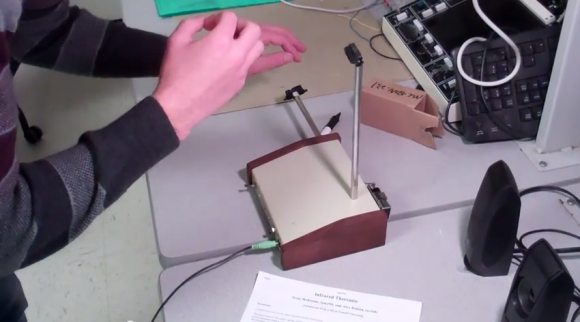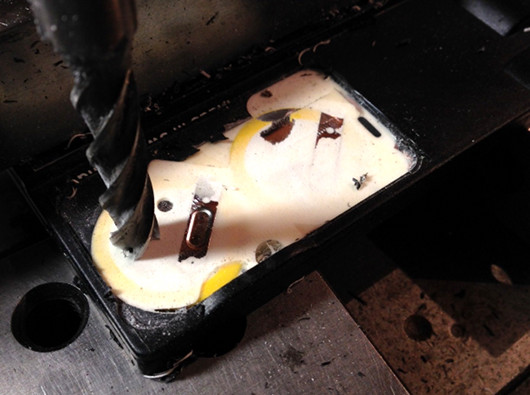
At the end of every semester, we get a bunch of cool and well-documented student projects from Cornell’s ECE4760 class. [Scott] and [Alex]’s infrared theremin is no exception.
The classic theremin design employs each of the player’s hands as the grounded plate of a variable capacitor in an LC circuit. For the pitch antenna, this circuit is part of the oscillator. For the volume antenna, the hand capacitor detunes another oscillator, changing the attenuation in the amplifier.
[Scott] and [Alex] put a twist on the theremin by using two IR sensors to control volume and pitch. The sensors compute the location of each hand and output a voltage inversely proportional to its distance from the hand. An ATMega1284P converts the signal to an 8-bit binary number for processing. They built four voices into it that are accessible through the push-button switch. The different voices are created with wave combinations and modulation effects. In addition to Classic Theremin, you can play in pure sine, sawtooth, and FM modulation.
If you’re just not that into microcontrollers, you could build this digital IR theremin instead. If you find IR theremins soulless or plebeian, try this theremincello.





 [Sebastian] works at an engineering company testing car ECUs, head units, and all the confusing wiring harnesses found in the modern-day automobile. It’s good work, but not exactly fun, so [Sebastian]’s bosses bought a foosball table so the employees could unwind. The foosball tables have been there for several years, and now everyone at the company is really, really good at twirling little football players on a stick. With their current rule set (at least 6 goals and 2 goals ahead), matches last at least twenty minutes.
[Sebastian] works at an engineering company testing car ECUs, head units, and all the confusing wiring harnesses found in the modern-day automobile. It’s good work, but not exactly fun, so [Sebastian]’s bosses bought a foosball table so the employees could unwind. The foosball tables have been there for several years, and now everyone at the company is really, really good at twirling little football players on a stick. With their current rule set (at least 6 goals and 2 goals ahead), matches last at least twenty minutes.










